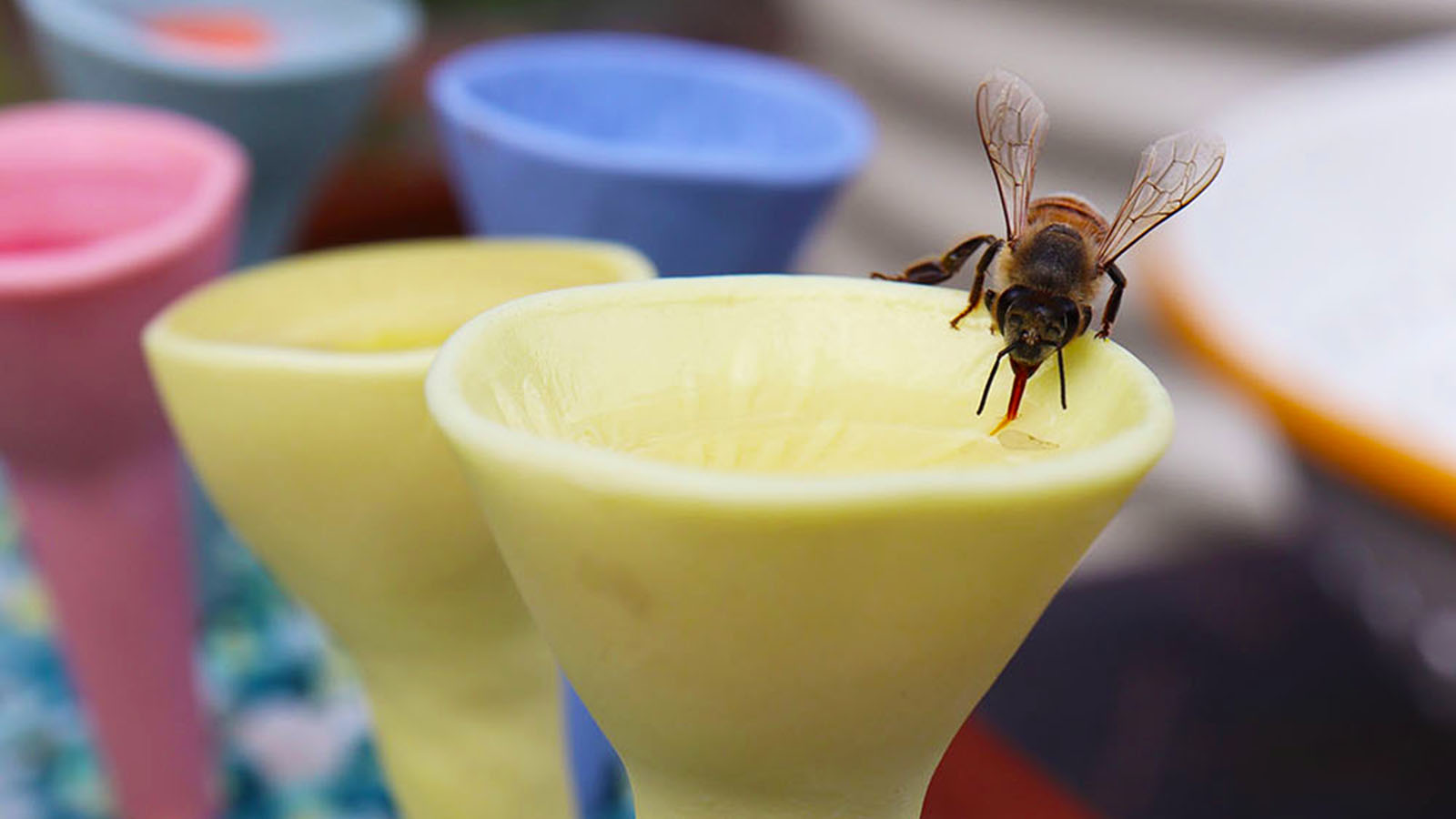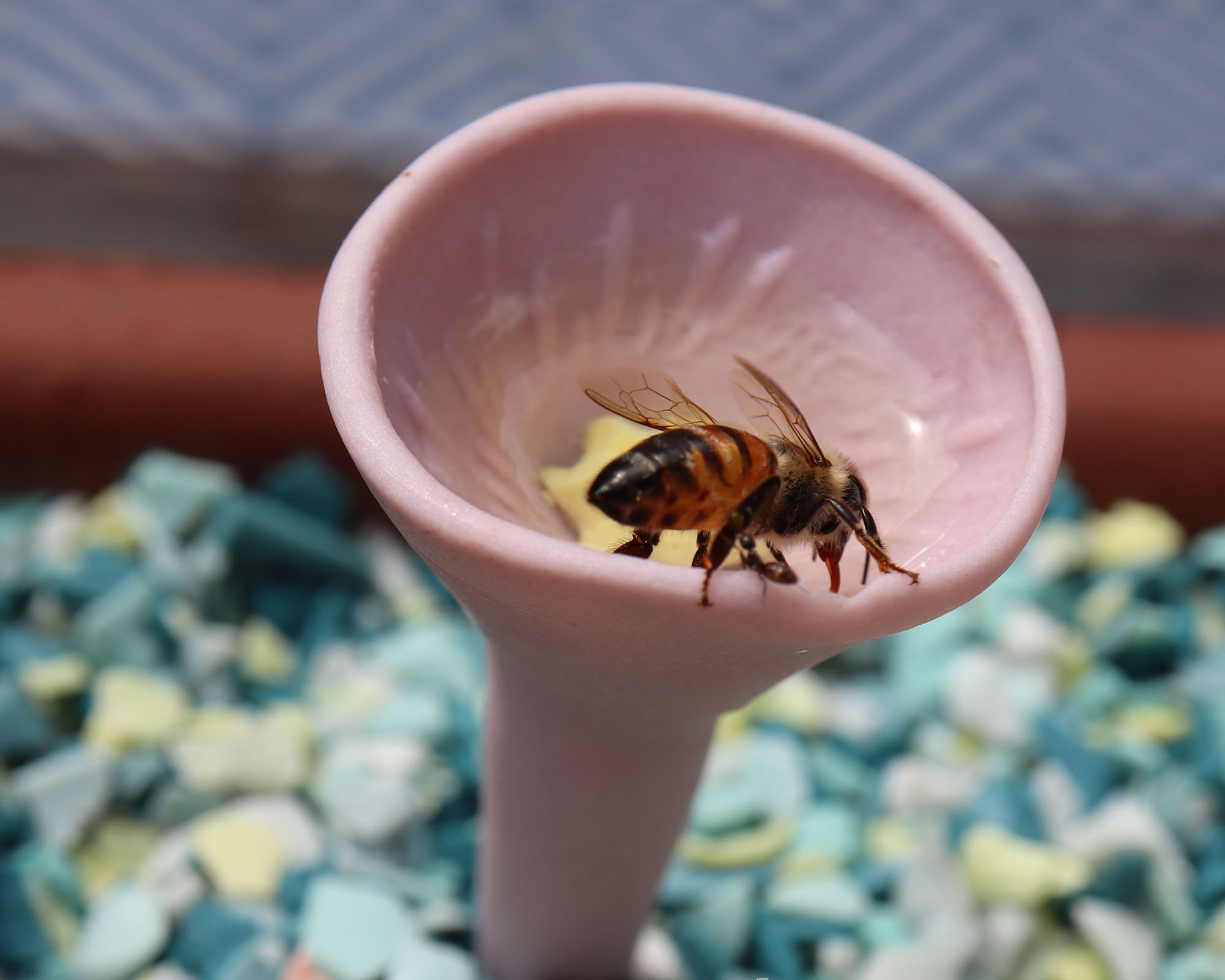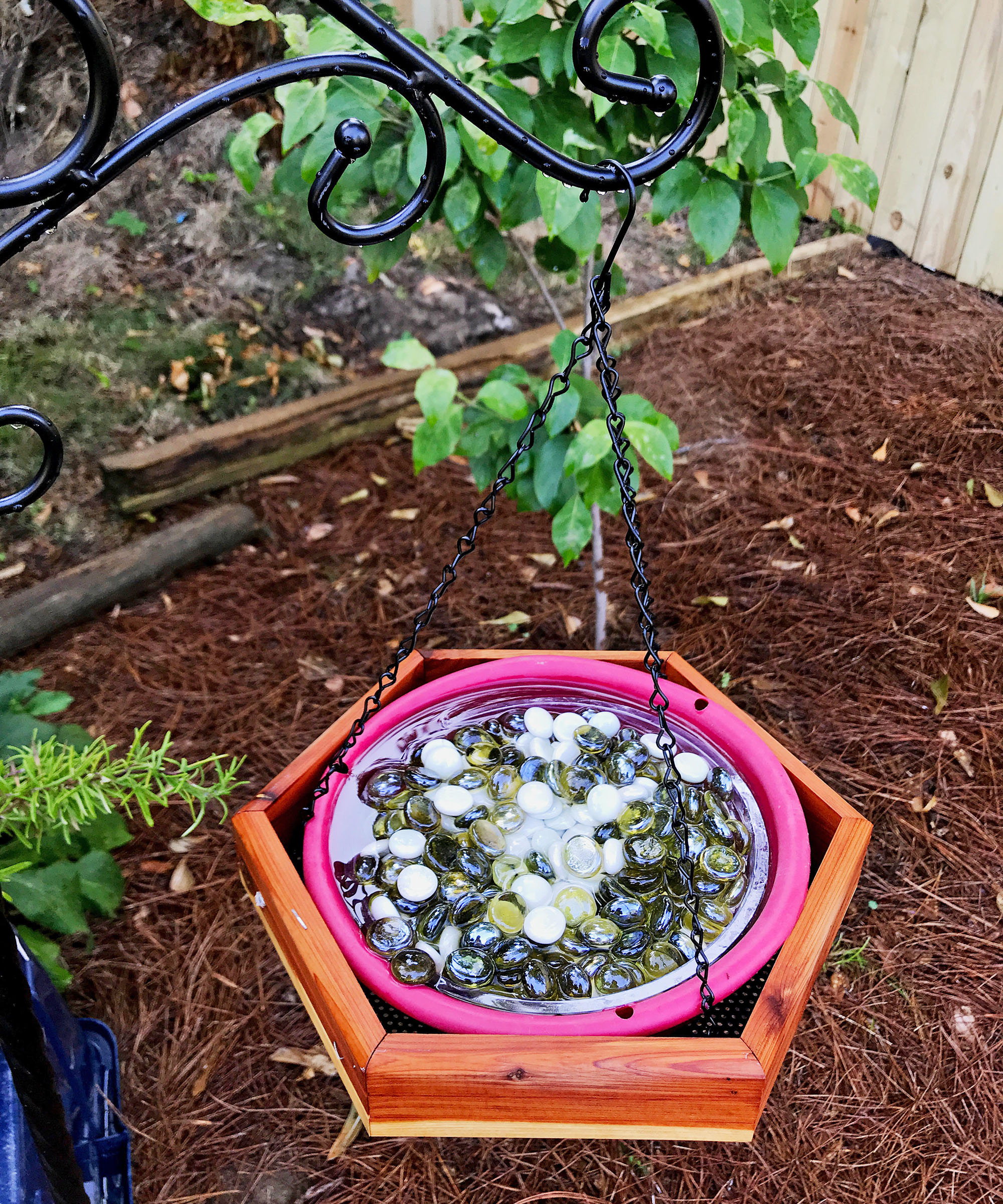Bee Cups For Gardens: How To Add A Pollinator Water Station
Support bees and butterflies by adding a water station to your garden. Choose from DIY solutions to stylish designs that will add to the charm of the space.


Most gardeners understand the importance of providing bird baths for our feathered friends, but stop to spare a thought for bees and other precious pollinators, including butterflies.
At the height of summer, and in times of drought, these beneficial insects are in desperate need of a safe water supply. However, most bodies of water present a drowning risk.
Adding a bee water station, such as bee cups, to the garden is an easy, inexpensive solution – and a fantastic way to support local wildlife.
When done in tandem with planting a pollinator garden filled with colorful native flowers, you will be helping to nurture a healthy biodiversity, and taking a step towards turning your yard into a wildlife habitat.
What Are Bee Cups For Gardens?
Bee cups for thirsty pollinators are a clever solution to providing a water supply. These mini drinking stations are available in metal, porcelain, and glass designs, that sit on spikes you can insert into the ground. They provide a small vessel of water that minimizes the risk of drowning.
You can either cluster bee cups together or spread them out across the garden. It’s best to position them near plants that attract bees, but ensure they are not covered by foliage.
As well as water, the cups provide a place to put overripe fruits, creating a butterfly feeding station.
Sign up for the Gardening Know How newsletter today and receive a free copy of our e-book "How to Grow Delicious Tomatoes".
Ecological artist Jen Rose has designed the most charming porcelain Bee Cups that make an elegant garden feature (avoid poor-quality counterfeit designs by buying direct).
Her Bee Cups only hold a teaspoon of water and have a textured surface, to ensure a safe, secure place for bees and butterflies to rehydrate. In most climates, the water will have evaporated by the end of the day, meaning they won’t be a draw for mosquitoes.

“I designed Bee Cup watering stations based on insect anatomy,” she explains. “Everything from the size, texture, and the ultraviolet-reactive glaze are planned to make them identifiable to insects and inherently useful.”
As bees see ultraviolet colors, the UV-reactive glaze glows pink to them, making the cups look more like flowers.
What's interesting is that bees don't just drink the water, but use it as a cooling aid too. "Honey bees use water to create an evaporative cooling system in their hive," explains Jen. "They spray the water on the walls of their hive and flap their wings to create a draft.
“Bees pollinate a third of all the food we eat and the fibers used to make our clothing," she adds. "They are so essential to our ecosystem that, if they died out, humans would experience terrible famine.
“Other pollinators are part of the larger food chain that both eat pests in your garden and are food for larger animals like birds. Adding a water source to your garden will create a biodiverse ecosystem that supports life.”

How To Create A DIY Bee Water Station
As well as using bee cups, you can hydrate pollinators by creating a DIY bee water station. This can be as simple as adding stones or marbles to a bird bath or, better yet, a shallow saucer. The bath must be shallow enough so the bees can rest on the stones, without becoming submerged in the water.
The downside to using your bird bath for this purpose is that bees sometimes deter birds, so you may need more than one.
Hygiene is paramount for bird baths, so ensure the water is changed daily, and that the bath is cleaned weekly.
While birds require a clean spot to drink, bees aren’t quite so fussy and are attracted to water that has algae and plant growth. Consider creating a miniature wildlife pond, with plenty of big stones for bees and other pollinators to rest on. Wine corks, sponges, and floating pond plants can also provide a landing pad.
Additionally, a gently trickling water fountain is a desirable drinking source for bees, as long as the current is weak, so consider adding one to your garden.

Melanie is an experienced gardener and has worked in homes and gardens media for over 20 years. She previously served as Editor on Period Living magazine, and worked for Homes & Gardens, Gardening Etc, Real Homes, and Homebuilding & Renovating. Melanie has spent the last few years transforming her own garden, which is constantly evolving as a work in progress. She is also a passionate organic home grower, having experimented with almost every type of vegetable at some point. In her home, Melanie tends to an extensive houseplant collection and is particularly fond of orchids.